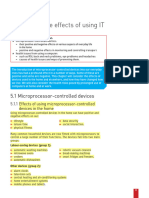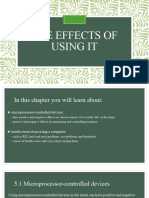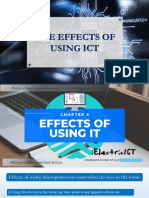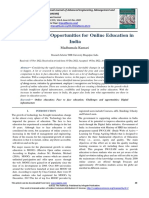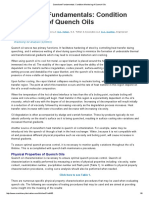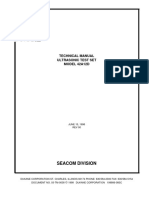0% found this document useful (0 votes)
27 views13 pagesUnit 5.1-5.2 Ict
The document discusses the effects of microprocessor-controlled devices and smart devices on lifestyle, health, and transport. It highlights both positive aspects, such as increased leisure time and improved home security, as well as negative impacts, including data security issues and reduced social interaction. Additionally, it addresses potential health problems related to prolonged IT equipment use, such as back pain and eyestrain.
Uploaded by
aseel.hasabmohCopyright
© © All Rights Reserved
We take content rights seriously. If you suspect this is your content, claim it here.
Available Formats
Download as PDF, TXT or read online on Scribd
0% found this document useful (0 votes)
27 views13 pagesUnit 5.1-5.2 Ict
The document discusses the effects of microprocessor-controlled devices and smart devices on lifestyle, health, and transport. It highlights both positive aspects, such as increased leisure time and improved home security, as well as negative impacts, including data security issues and reduced social interaction. Additionally, it addresses potential health problems related to prolonged IT equipment use, such as back pain and eyestrain.
Uploaded by
aseel.hasabmohCopyright
© © All Rights Reserved
We take content rights seriously. If you suspect this is your content, claim it here.
Available Formats
Download as PDF, TXT or read online on Scribd
/ 13












